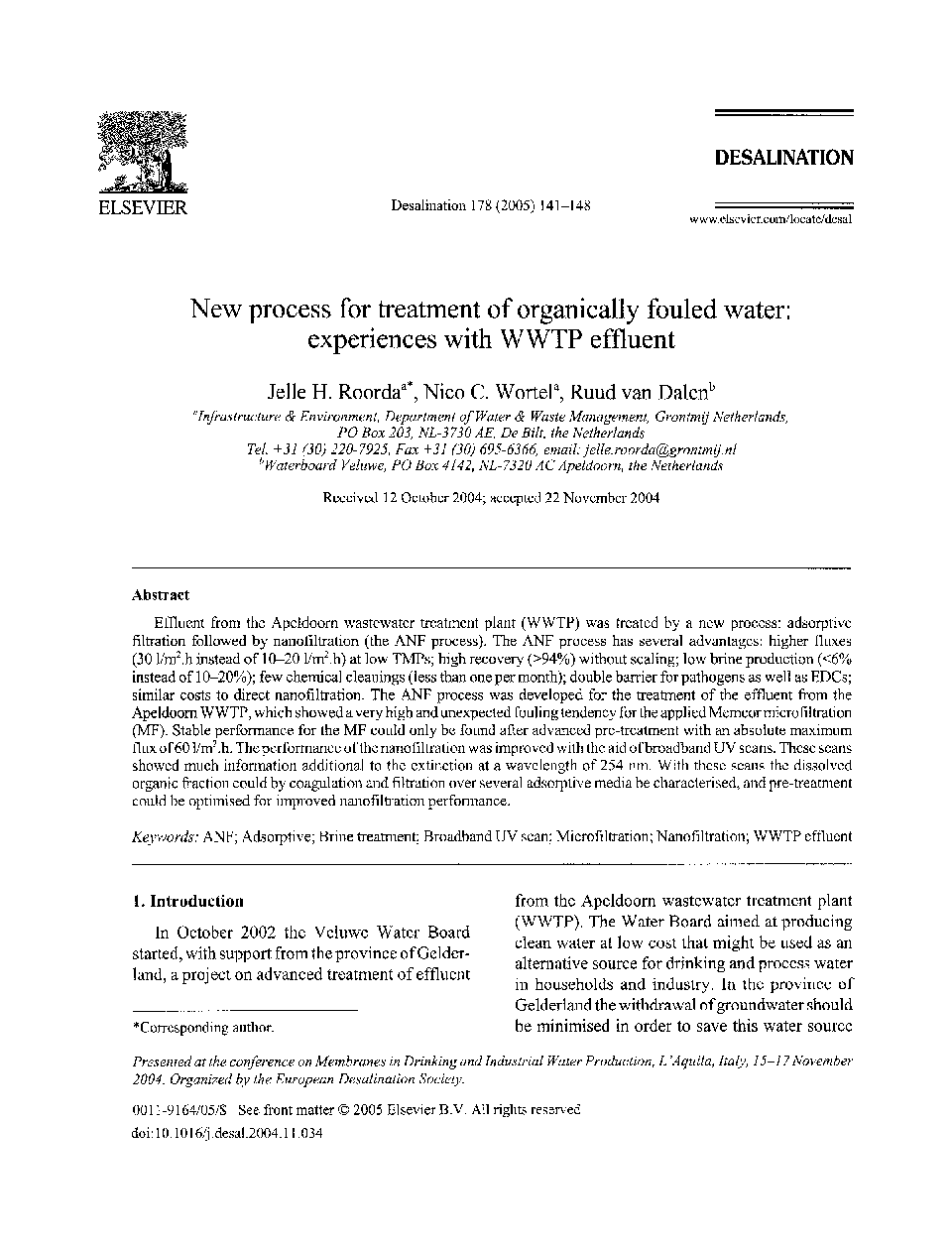| Article ID | Journal | Published Year | Pages | File Type |
|---|---|---|---|---|
| 9681140 | Desalination | 2005 | 8 Pages |
Abstract
Effluent from the Apeldoorn wastewater treatment plant (WWTP) was treated by a new process: adsorptive filtration followed by nanofiltration (the ANF process). The ANF process has several advantages: higher fluxes (30 l/m2.h instead of 10-20 l/m2.h) at low TMPs; high recovery (>94%) without scaling; low brine production (<6% instead of 10-20%); few chemical cleanings (less than one per month); double barrier for pathogens as well as EDCs; similar costs to direct nanofiltration. The ANF process was developed for the treatment of the effluent from the Apeldoorn WWTP, which showed a very high and unexpected fouling tendency for the applied Memcor microfiltration (MF). Stable performance for the MF could only be found after advanced pre-treatment with an absolute maximum flux of 60 l/m2.h. The performance of the nanofiltration was improved with the aid of broadband UV scans. These scans showed much information additional to the extinction at a wavelength of 254 nm. With these scans the dissolved organic fraction could by coagulation and filtration over several adsorptive media be characterised, and pre-treatment could be optimised for improved nanofiltration performance.
Related Topics
Physical Sciences and Engineering
Chemical Engineering
Filtration and Separation
Authors
Jelle H. Roorda, Nico C. Wortel, Ruud van Dalen,
